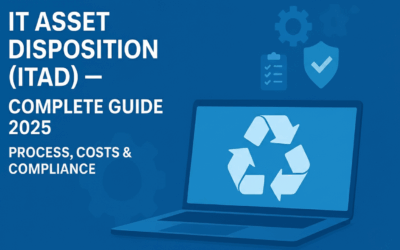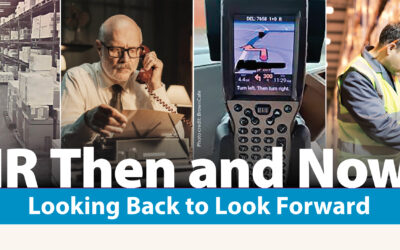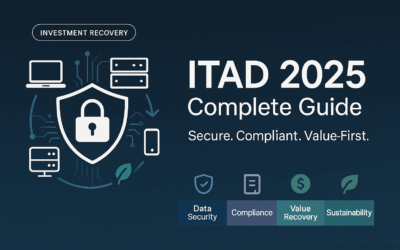Powering Sustainable Investment Recovery: Emerging Trends in Electric Transformers — and What They Mean for You
In the past, electric transformers reached your desk only when they were scheduled for resale, redeployment, or scrap. Today, however, the transformer itself is evolving so quickly that keeping pace with technology is essential long before the end-of-life conversation begins. Smarter, greener designs are reshaping both the market value of retired units and the risk profile of holding them too long.
This post distills the latest design breakthroughs into practical insights for investment-recovery (IR) professionals charged with maximizing asset value while advancing corporate sustainability goals.
1. Why Transformers Deserve a Fresh Look from IR Teams
-
Sheer Scale & Value
Even a mid-size substation transformer can weigh 30 tons and contain thousands of pounds of copper and steel—an outsized line item in any surplus portfolio. -
Regulatory & ESG Pressure
Emerging rules on greenhouse-gas (GHG) reporting and hazardous-substance disposal expose companies to financial and reputational risk if legacy units are mishandled. -
Market Price Volatility
Copper, aluminum, and silicon-steel prices fluctuate dramatically. Timing a sale, refurbishment, or material recovery now demands closer alignment with commodity markets and technology road maps.
2. Six Transformer Trends IR Pros Need to Track
2.1 Environmentally Focused Designs
-
Biodegradable Insulating Oils (vegetable-based esters) replace traditional mineral oil, slashing spill-response costs and liability.
-
SF₆-free switchgear uses dry air, nitrogen, or CO₂ blends—good news for dismantlers because buyers increasingly shun equipment containing high-potency GHGs.
-
Low-Noise Construction lowers community-impact fees and widens resale markets in urban areas.
IR Takeaway: Green credentials boost resale potential and may qualify retired units for ESG-linked incentives or premium scrap pricing.
2.2 High-Efficiency Core Materials
-
Amorphous-Metal Cores cut no-load losses up to 70 percent, making even used units attractive where energy-efficiency rebates exist.
-
Superconducting Transformers (still niche) promise 3–5× power density in a smaller footprint, signaling higher future salvage value for specialized alloys.
IR Takeaway: Document core composition now; tomorrow’s buyers will pay for verifiable efficiency data.
2.3 Smart & Digital Capabilities
-
IoT Sensors + Edge Analytics stream live temperature, vibration, and moisture data.
-
AI-Driven Diagnostics predict winding failures months ahead, informing keep-versus-sell decisions.
-
Cyber-Resilient Firmware with zero-trust architecture will soon be mandatory for critical-infrastructure resale.
IR Takeaway: Secure a copy of the digital twin and firmware licenses when units are decommissioned—missing data can wipe out secondary-market value.
2.4 Compact, Modular Designs
-
Solid-State Transformers (SSTs) use power electronics instead of copper-iron cores, shrinking size and weight by up to 50 percent.
-
Bolt-On Modules allow field upgrades (e.g., new cooling blocks) without full replacement.
IR Takeaway: Modular construction simplifies partial resale, letting IR teams harvest high-value modules while scrapping only obsolete sections.
2.5 Enhanced Safety & Resilience
-
Fire-Resistant Insulation and built-in fire barriers reduce incident liability during storage and transport.
-
EMP-Hardened Designs protect critical grids and fetch premiums in defense or data-center markets.
IR Takeaway: Capture and certify safety ratings; they translate directly into higher auction bids.
2.6 Integration with Renewable & Bidirectional Grids
-
Smart-Grid Transformers handle variable input from solar and wind farms.
-
Bidirectional Power Flow supports vehicle-to-grid and battery-storage applications—fast-growing markets hungry for reliable used equipment.
IR Takeaway: Even end-of-warranty units can find second lives in community-solar or micro-grid projects if their control firmware is up to date.
3. Turning Trends into Opportunity: A Playbook for IR Professionals
| Action | Why It Matters | How to Execute |
|---|---|---|
| Audit Digital Assets | Missing sensor data or firmware keys can lower resale value by 20 %+. | Request digital-twin files and license packs during de-energization. |
| Segregate by Oil Type | Ester-filled units trade at a premium and incur lower haz-mat costs. | Label tanks immediately; store on separate containment pads. |
| Leverage Predictive Maintenance Logs | Buyers pay more when condition data proves remaining life. | Export historical sensor data into a shareable PDF with IR stamp. |
| Monitor Metal Markets | Timing scrap sales can swing recovery revenue dramatically. | Automate alerts for LME copper & silicon-steel price thresholds. |
| Build ESG Narratives | Demonstrating circular-economy wins secures internal buy-in and external credibility. | Track tons of CO₂e avoided through refurbishment vs. replacement. |
4. Key Questions to Ask Asset Owners & Suppliers
-
What insulating fluid is in each unit, and is it RoHS-compliant?
-
Does the firmware support secure data wipe or transfer?
-
Are core materials amorphous, grain-oriented, or mixed?
-
Is the transformer SF₆-free, and if not, can gas reclamation be arranged?
-
Are modular components separately serial-numbered for resale?
5. Looking Ahead
Digitalization and decarbonization are transforming transformers from static steel boxes into data-rich, eco-engineered assets. For investment-recovery professionals, that means earlier engagement, smarter documentation, and the chance to move from cost-center to strategic value-creator.
Ready to turn retired electrical gear into revenue—and a sustainability win? Explore our full suite of asset-disposition services or contact INV Recovery today to discuss your upcoming transformer retirements.


